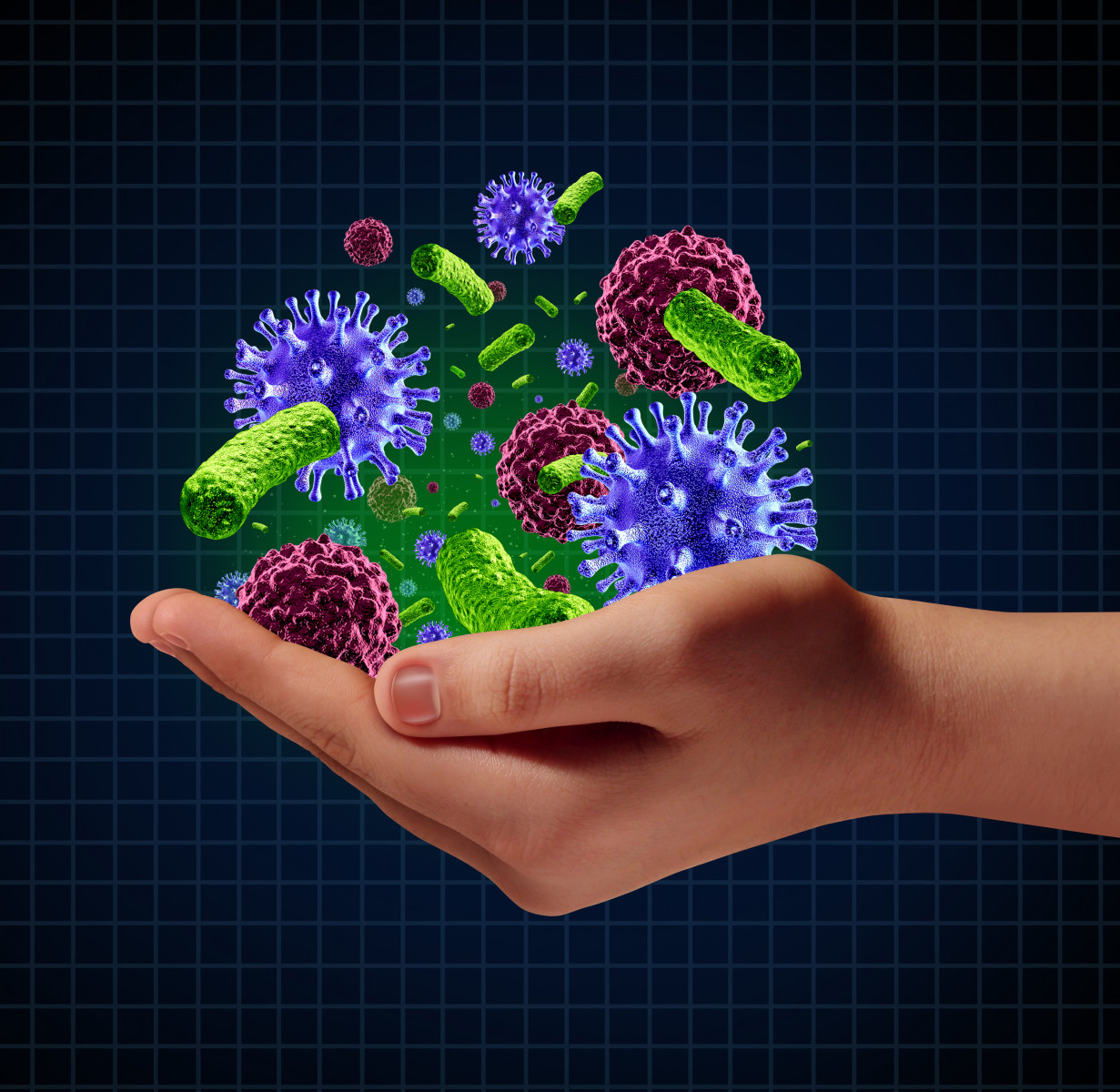Researchers Develop Promising Antibiotic Molecule for Drug-resistant Lung Infections

A man-made antibiotic able to fight drug-resistant bacteria in the lungs with minimal toxicity to a person’s cells may be a promising approach to eliminate lung infections, such as those caused by resistant Pseudomonas aeruginosa, that trouble people with cystic fibrosis (CF), a study suggests.
The antibiotic molecule was tested in the lab and in mice with lung infections, where it effectively cleared the resistant bacteria without notable side effects. The findings warrant its clinical testing as an aerosol against multi-drug resistant bacteria in the lungs, researchers noted.
The study, “Enhanced therapeutic index of an antimicrobial peptide in mice by increasing safety and activity against multidrug-resistant bacteria,” was published in the journal Science Advances.
The excessive production of mucus in people with CF creates an environment in the lungs that increases the propensity for lung infections. Infections increase the severity of lung disease and are linked to a number of secondary conditions that develop in CF patients, but bacterial organisms are often resistant to common antibiotics, which make them difficult to clear.
With the rising prevalence of multi-drug resistant bacteria, or superbugs, which kill more than 35,000 people in the U.S. each year, researchers are turning their attention to antibiotic molecules.
Antimicrobial peptides (AMPs) are natural small proteins that the human body uses as a first line of defense against bacteria, disrupting their membrane even in cases of resistance to more conventional antibiotics. But AMPs work only in specific circumstances, and are susceptible to degradation when used outside their optimal conditions.
Modifying AMPs in a way that makes them less vulnerable to degradation and that further increases their antimicrobial activity has been widely investigated, and some of these synthetic molecules are now reaching clinical trials for specific infections.
This is the case of an engineered cationic AMP (eCAP), named WLBU2, developed by study co-authors Berthony Deslouches, MD, PhD, and Ronald Montelaro, PhD, two professors at the University of Pittsburgh Graduate School of Public Health.
WLBU2 is licensed by a university spin-off, called Peptilogics, and is currently being tested in a clinical trial for use in preventing infections associated with knee and hip replacements.
While this antimicrobial molecule is able to fight the most common superbugs and has activity against bacteria in biofilms — which are formed in the lungs of CF patients — there is still room for improvement, not only to increase the molecule’s stability but to lessen its toxicity to patients.
Aiming to improve WLBU2, Pittsburgh researchers changed the molecule — basically, they constructed near-mirror versions of its amino acids (the building blocks of proteins). The researchers made several new versions of WLBU2, but the molecule that worked best contained eight flipped amino acids, and thus received the name D8.
The D8 molecule was found to retain the antibacterial activity of WLBU2, and also killed bacteria by breaking their membrane, but was much more stable than WLBU2 in the blood, which contain proteases (proteins that degrade proteins). This suggested D8 was less vulnerable to degradation.
Both D8 and WLBU2 were efficient in fighting drug-resistant bacteria, seen by the World Health Organization as priority microbes for which new antibiotics are urgently needed, though D8 turned out more effective than WLBU2 at preventing the formation of bacterial biofilms.
When the stability of a certain medicine increases, it remains longer in the body, which may increase its toxicity. But to the researchers’ surprise, the D8 antibiotic was much less toxic to blood cells than WLBU2.
When D8 was used at doses nearly 25 times what would be used therapeutically, it caused the death of 1% of red blood cells and about 15% of white blood cells. WLBU2, in contrast, killed 20% and 30% of these cells, respectively.
“We were so surprised and happy,” Y. Peter Di, PhD, associate professor at Pitt Public Health, and the study’s lead author, said in a press release. “At first, we were skeptical and repeated the experiment — but yes, it was 20 times less toxic toward red blood cells in our lab.”
Additional experiments in mice with lung infections confirmed the findings, with both WLBU2 and D8 reducing lung burden from a lethal infection to a non-lethal one.
Also in mice, D8 was slightly more effective and had a much lower toxicity than WLBU2. At a dose of 35 micrograms (mcg) of WLBU2, about 17% of mice died and the remaining were lethargic, while mice could receive up to 140 mcg of D8 without apparent side effects.
“When we saw similar results in mice, we were really excited,” said Di.
“This considerable improvement in lowering toxicity, coupled with the new drug’s strong stability and activity against superbugs, is good evidence that this compound will be well-suited for clinical applications in treating respiratory infections,” he added.
The team is now exploring D8’s potential as an aerosolized treatment for CF patients burdened with drug-resistant lung infections and for those developing pneumonias associated with mechanical ventilation, as is happening in some people with COVID-19 infections.
Overall, “this report underscores the therapeutic potential of D8 in the context of respiratory infections such as those related to CF and ventilator-associated pneumonia, which are often complicated by drug resistance,” the researchers wrote.







